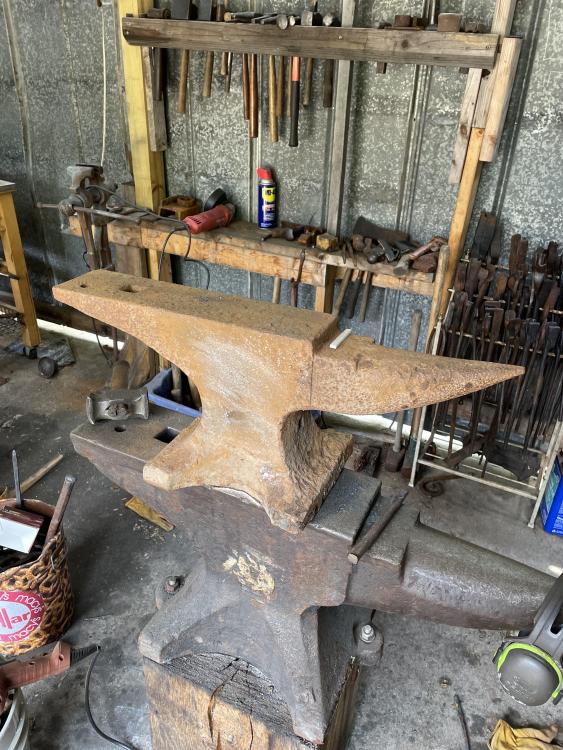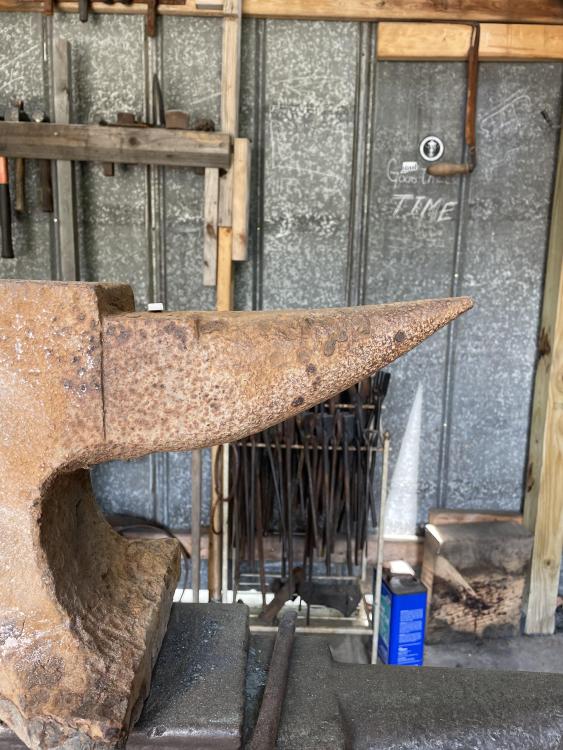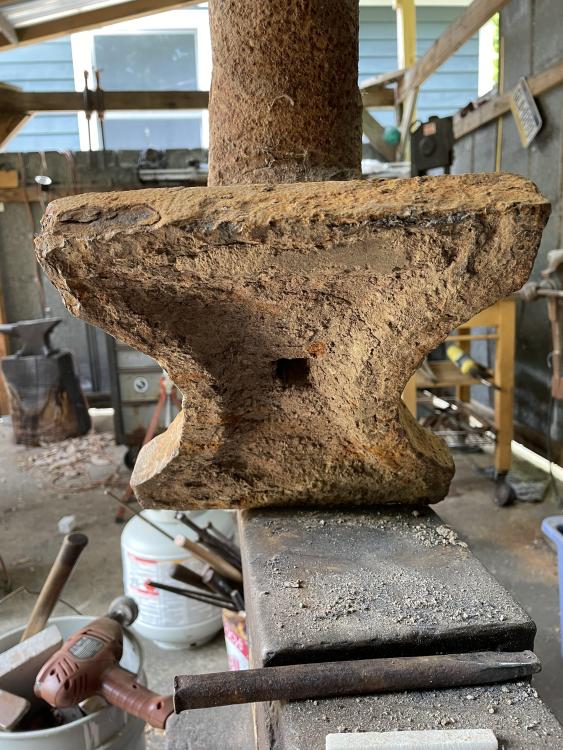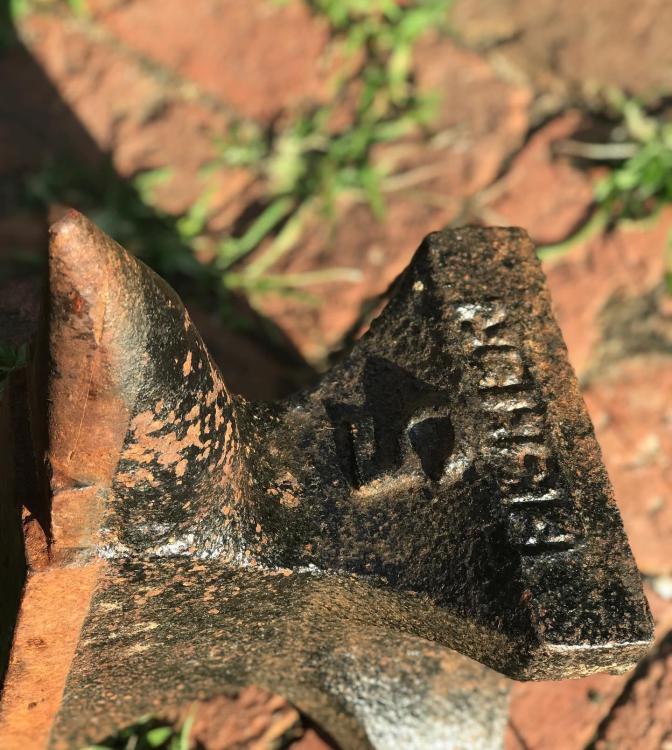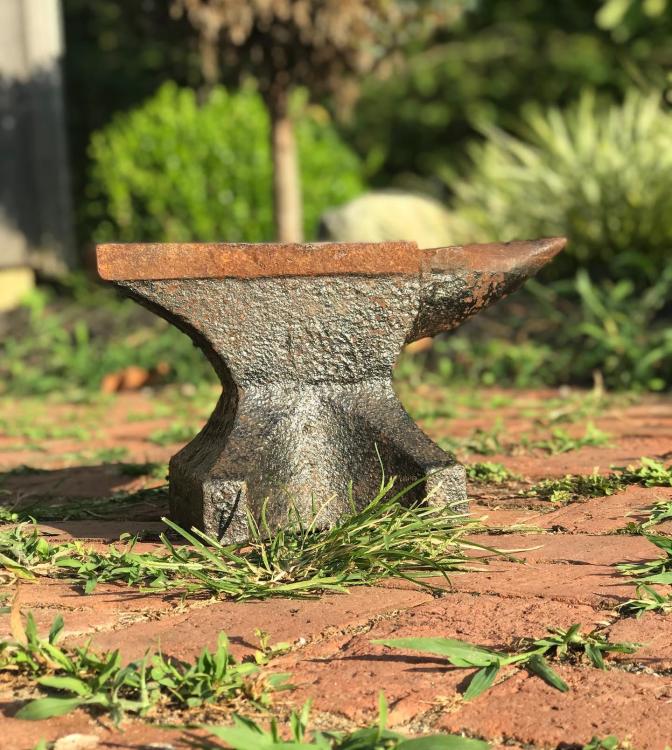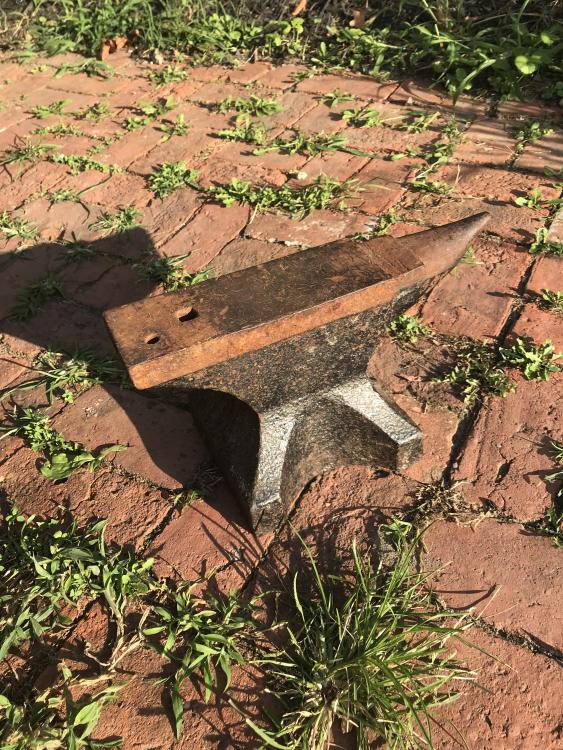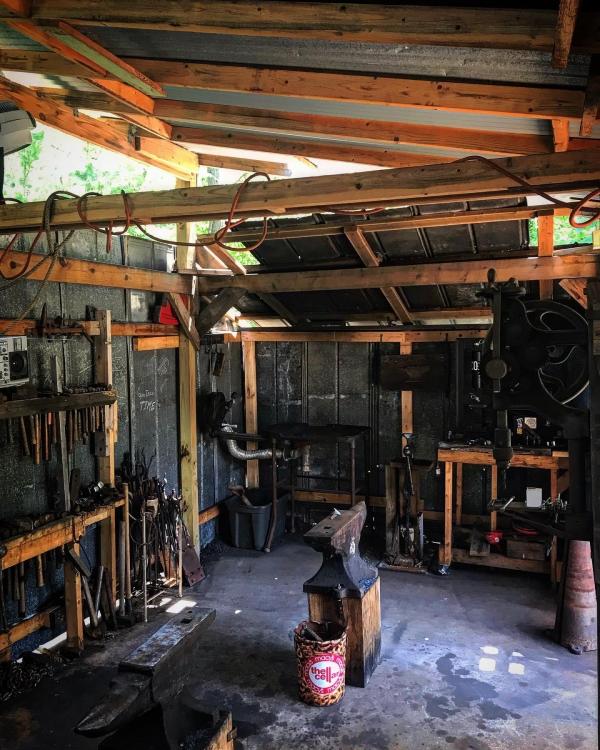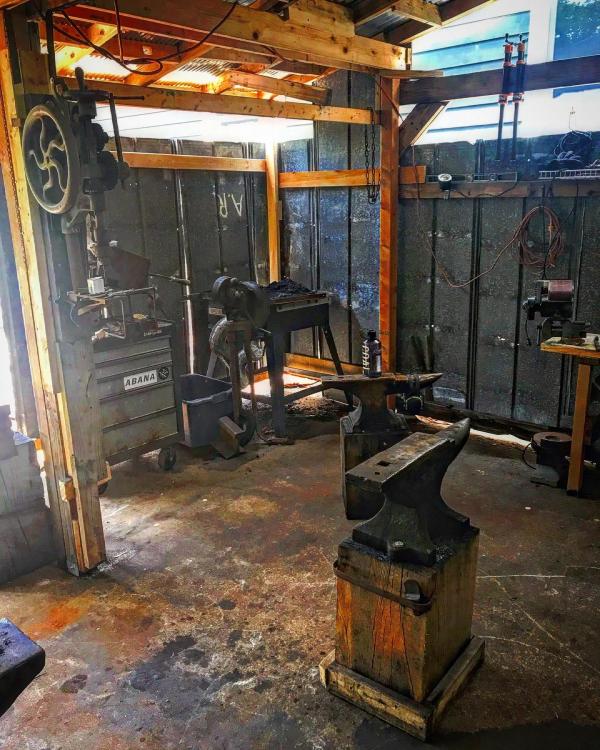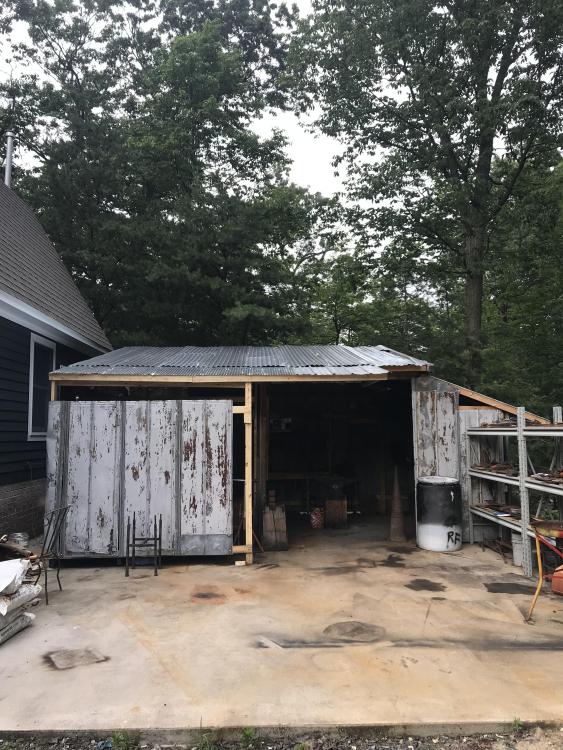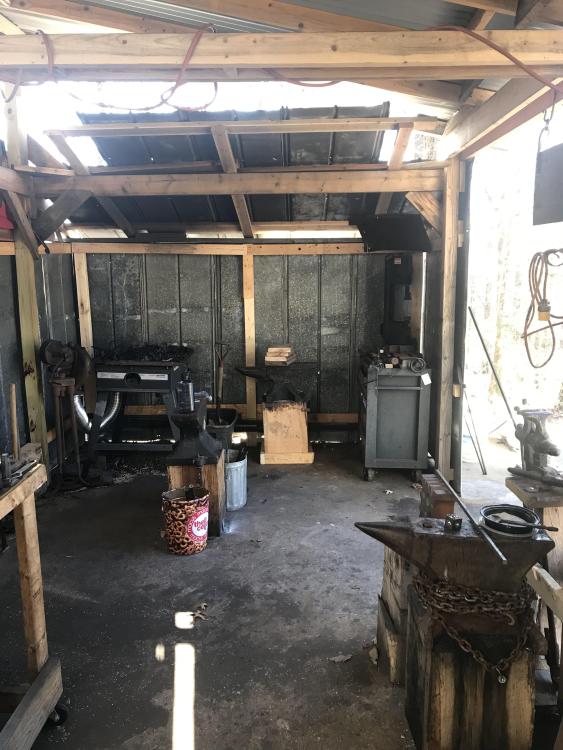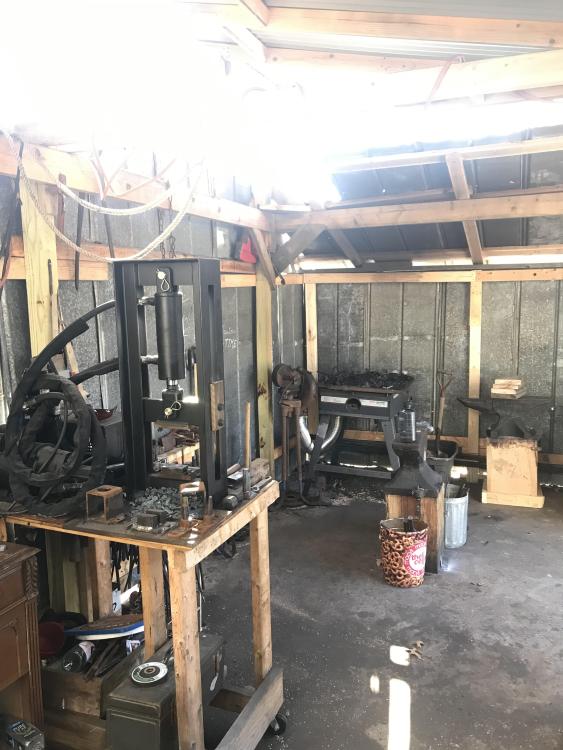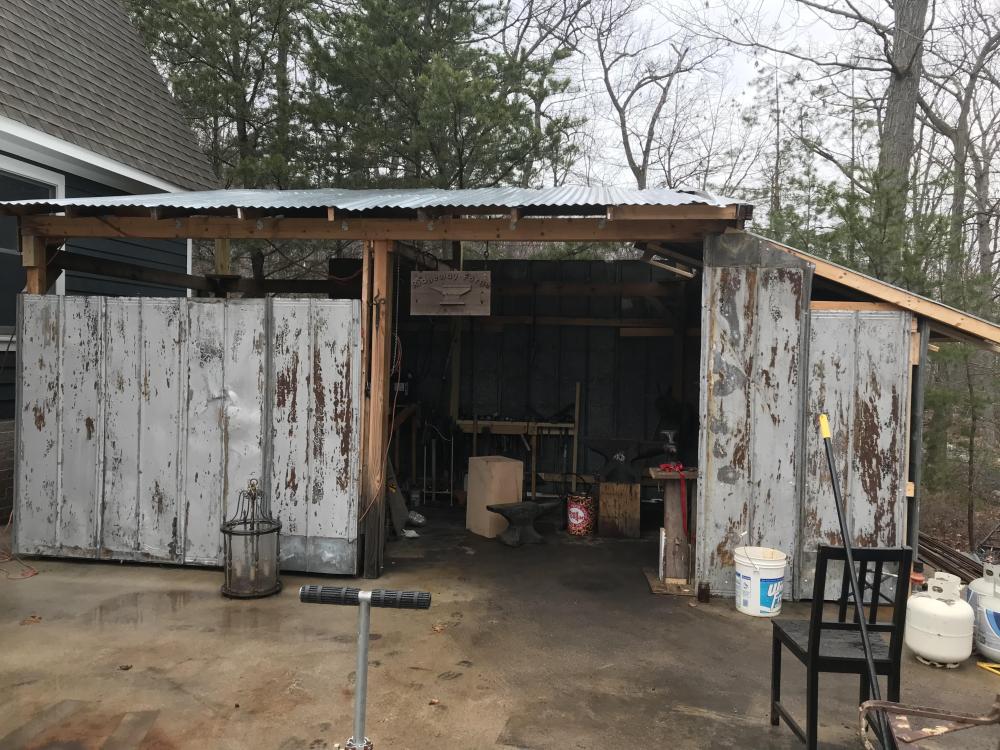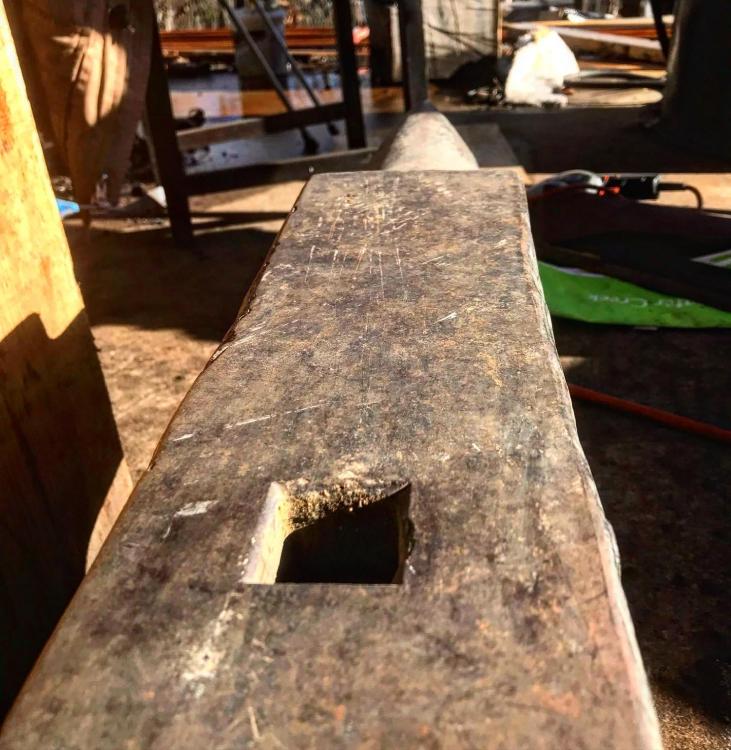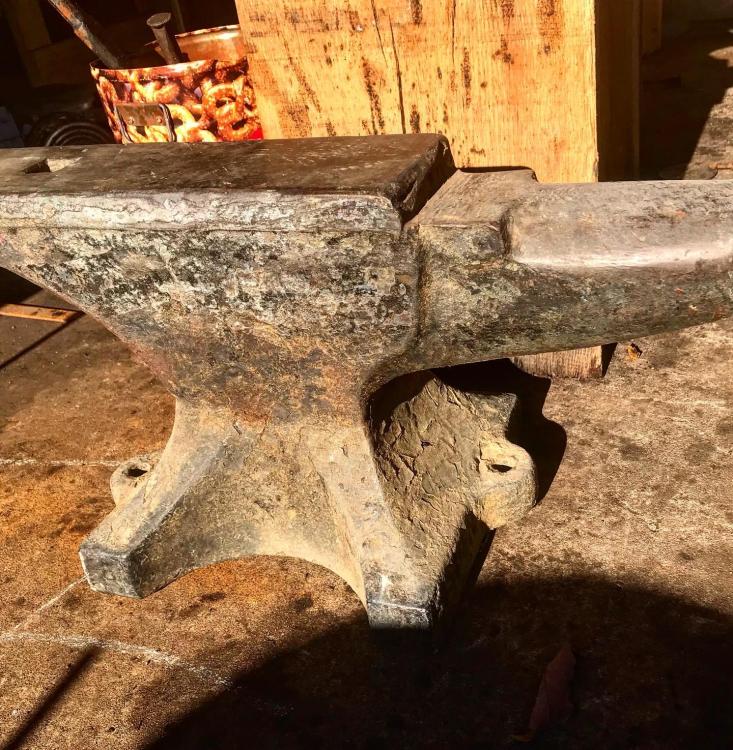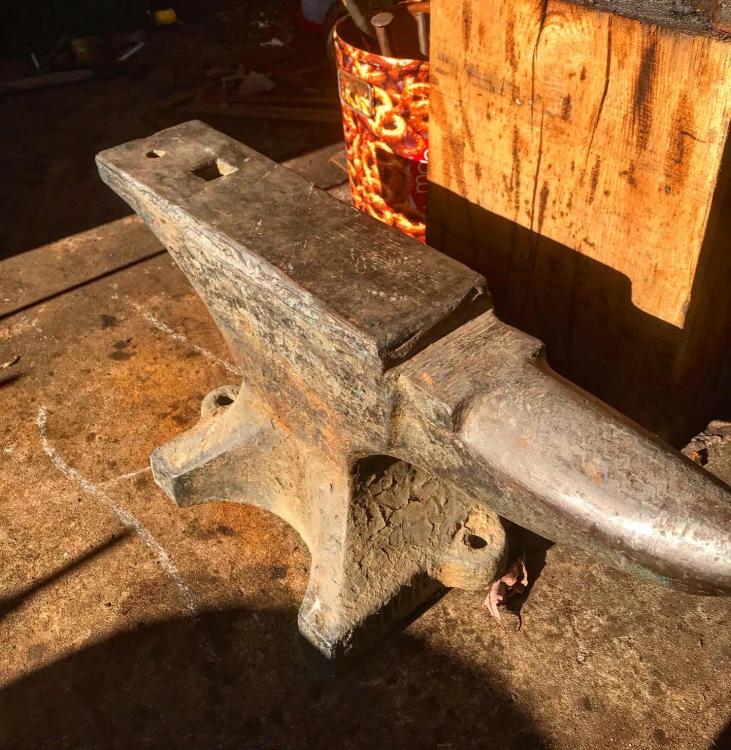-
Posts
102 -
Joined
-
Last visited
Content Type
Profiles
Forums
Articles
Gallery
Downloads
Events
Everything posted by Ridgeway Forge Studio
-
Frosty, Thanks for your reply! I am in no way doubting Mr. Aspery's skill - I have the highest regard for his work and his contributions to the ABANA curriculum. I think I mean to ask the question more along the lines of a conceptual thought experiment. Fullers are objectively more efficient that flat surfaces, but connecting the dots I wonder whether the unsupported horn takes away enough efficiency to negate its benefits. I have to wait for some mourning doves to hatch in my shop before I test out my theory. I think this ties in to two conversations commonly held here on IFI - the mounting of railroad track pieces as anvils and questions about mass. Ideally, a fuller would be supported uninterrupted all the way to the ground, the way some French pig anvils are with their slightly domed faces. If you had, for example, a horn that kept its top radii but extended vertically into the ground (which would make it not a horn I suppose), it would be more effective than an unsupported horn. A well dressed anvil edge seems to me to be, ounce for ounce, objectively more efficient than the horn in drawing out. That's all I'm trying to say. I have tried both ways, and, while it takes more precisions to ensure you don't get a cold shut, I feel that the edge of the anvil works as well if not better for drawing than a horn. That being said, I do think the overall size of the anvil makes a difference in drawing over the horn. My 350 Fisher has plenty of strength to resist flexing on the horn - but my 120lb Hay Budden seems (just a casual guess) to be less efficient, and I can't help but wonder if the Wrought Iron flexes in use. I guess what I'm trying to say is that a horn has its uses, and drawing is certainly one of them. But drawing over the edge is a valuable skill that should be learned, and perhaps even preferred for general hand forging, such as drawing reins on tongs. Just my two cents. I enjoy a good theoretical conversation! -Pat
-
I have been thinking about this thread all day - I was watching some videos of Mark Aspery drawing out over the horn of his anvil, and noticed that it seemed inefficient compared with the work I have seen from others using half-faced blows over the sweet spot of the anvil. Given that the horn is unsupported in the vertical dimension and is only laterally supported, would it not tend to flex more under heavy blows compared to half-faced blows in the vicinity of the sweet spot? I know there is a lot of advice about drawing over the horn and, given the points of contact, seem to make sense. But is there any evidence?
-
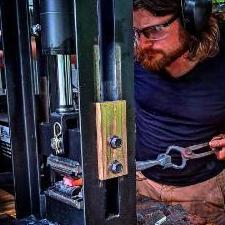
What did you do in the shop today?
Ridgeway Forge Studio replied to Mark Ling's topic in Blacksmithing, General Discussion
Jennifer, your work is an inspiration. Well done. -

railroad tie plate
Ridgeway Forge Studio replied to Matt Smith's topic in Blacksmithing, General Discussion
Two tie plates welded together might work as a makeshift swage block. The only question is how much in welding materials makes this “free” project worth it over purchasing a swage block or a larger piece of metal (maybe a 3”x 3x2 chunk) and putting some holes in that? -

Power hammer, hammer eye punch die?
Ridgeway Forge Studio replied to mnidoone's topic in Slitters, Punches, Drifts, etc
For what it’s worth, it feels unnecessarily ambitious to try and do both steps at the same time. whats wrong with making a slot punch, then several powerhammer drifts? -

Power hammer, hammer eye punch die?
Ridgeway Forge Studio replied to mnidoone's topic in Slitters, Punches, Drifts, etc
I would try to make that pyramid into a triangle- lose the cubic dimension, so that it is rectangular in a top-down view, a triangle from the side. Usually you punch then drift- it looks like your idea is more punch drift combo -

Trenton, I Think
Ridgeway Forge Studio replied to Ridgeway Forge Studio's topic in Anvils, Swage Blocks, and Mandrels
It does have the fullering under the heel! No trace of a logo that I can see however. I suspect this sat in a muddy basement or flooded barn- the indent was filled with dried mud that smelled like a creek. I don’t think it’s ever been struck. -
I just picked up this anvil for a small steal- it’s pitted through and through, but I have another anvil for a smooth face. I think it is a Trenton. I’d love a positive ID! dimensions are: 26” horn to heel, 4” wide, 10.5” high. I don’t have an exact weight, but I would guess between 150-175?
-
Really makes me wonder who didn’t use it. Someone bought it and never used it, and so on. Josh, any chance the black paint on this little guy could be original?
- 658 replies
-
- Cast anvil
- Fisher & Norris
-
(and 1 more)
Tagged with:
-
No one really tells you how small 50lb anvils are… Just picked up a Fisher #5 dated from 1887. oldest anvil I own to date!
- 658 replies
-
- Cast anvil
- Fisher & Norris
-
(and 1 more)
Tagged with:
-

What did you do in the shop today?
Ridgeway Forge Studio replied to Mark Ling's topic in Blacksmithing, General Discussion
Not as of yet- the shop is built so that the second overhang acts as a smoke shelf and generally keeps the smoke out of the shop without a chimney- works except when there is a south eastern wind, which is a bit uncommon for me. -

What did you do in the shop today?
Ridgeway Forge Studio replied to Mark Ling's topic in Blacksmithing, General Discussion
This week was my semi annual spring cleaning- I call it that, but it’s really a complete shop overhaul. Whenever I get through a number of commissions I tend to deep clean, reorganize and move much of my tooling around. It’s a bit of a ritual for me, to clear the space in my mind as well as the shop. so I present to you the current layout of my shop- and this one might stick around for a while. -
Edges are a bit worn, but that’s a good score overall and a perfect shop size!!!
-

Separating the Ash Dump products
Ridgeway Forge Studio replied to Ridgeway Forge Studio's topic in Solid Fuel Forges
That’s what I thought I remembered, glad to have it confirmed. I have an old whirlwind firepot that has a fairly large grate and a stuck clinker breaker- thankfully my coal barely makes clinker- just some of the good coke inevitably makes it’s way down the chute and I’d very much like to recover it. Fuel is finally more expensive than time, so i would rather get my moneys worth! -
I seem to recall years ago reading about a way to separate the clinker, ash, spent fuel from and stray pieces of coal and coke that drop down the ash dump- for the life of me I cannot find the thread, so I am forced to ask the question again. is it possible to scoop the contents of my ash dump bucket into a large bin of water and recover any coke that fell down before burning? if I recall, the method was that coke floats and clinker and ash sink, so it provides a way to sort the ash dump and save the good bits. can anyone confirm or deny what I think I remember?
-

Anvil indentification help
Ridgeway Forge Studio replied to Itsnick's topic in Anvils, Swage Blocks, and Mandrels
Good to have you Nick I am local to you, just out in Emmitsburg Maryland if you ever find yourself out this way send me a message and stop by! -
I love it. Depending on the size of material you use it works a treat. I’m grateful that the blacksmith guild of western Maryland has a 16 ton, which has significantly larger dies, so I use that when I need to upset larger materials. Otherwise, the 12 ton is an amazing tool. I can break down up to 2 inch round fairly easily, and it is far more compact and quiet than a power hammer. Obviously all things have their pros and cons, but if noise, power and space are concerns like they are for me, the 12 ton packs a punch, far more than my right arm can.
-
I’ve posted some of my old shops on here before, but wanted to post my current iteration of my studio space. It is 20x10, built using new lumber and recycled materials. Keeps the rain and snow out! last thing I need to do is build a proper chimney, but the smoke shelf overhang I built for the coal forge works most of the time, except when the winds blow from the west.
-

Most useful tool in your shop ?
Ridgeway Forge Studio replied to Glenn's topic in Blacksmithing, General Discussion
Second on the pocket tongs- I have two very small sets of tongs that are about 8inches in length. A small bolt jaw tong and a small flat jaw. Insanely useful for many things involving the coal forge. second would be a slightly softer 1.5lb ball pein with a mushroomed face for setting forge welds. -
It was a capuchin Franciscan order in Washington DC- and it’s a wonder they had this one: it’s marked 1930, depression era fisher, and I can only guess that perhaps one or more of the monks decided that this was a good way to prepare for the financial apocalypse of the time!
- 658 replies
-
- Cast anvil
- Fisher & Norris
-
(and 1 more)
Tagged with:
-
Thomas, does this I can’t use it to squash roadrunners, given its monastic heritage? or perhaps being a Fisher it has taken a vow of silence?
- 658 replies
-
- Cast anvil
- Fisher & Norris
-
(and 1 more)
Tagged with:
-
Had an unexpected windfall- a monastery I used to go spend time with had an old anvil, which I always kept in my mind. I thought it was a fisher, but it has been almost 7 years since I’d seen it. Asked about it recently, they said come take it gratis. Got down there, and lo and behold it’s a 200lb Fisher without a flaw- even still a factory chamfer on it!!
- 658 replies
-
- Cast anvil
- Fisher & Norris
-
(and 1 more)
Tagged with:
-

Golden Means Calipers <photo heavy>
Ridgeway Forge Studio replied to Josh.Sampson's topic in Tools, general discussion
That is some top level work. And the precision involved is beyond my understanding. Kudos for the good work and thank you for the process photos- this would make a great blueprint.

